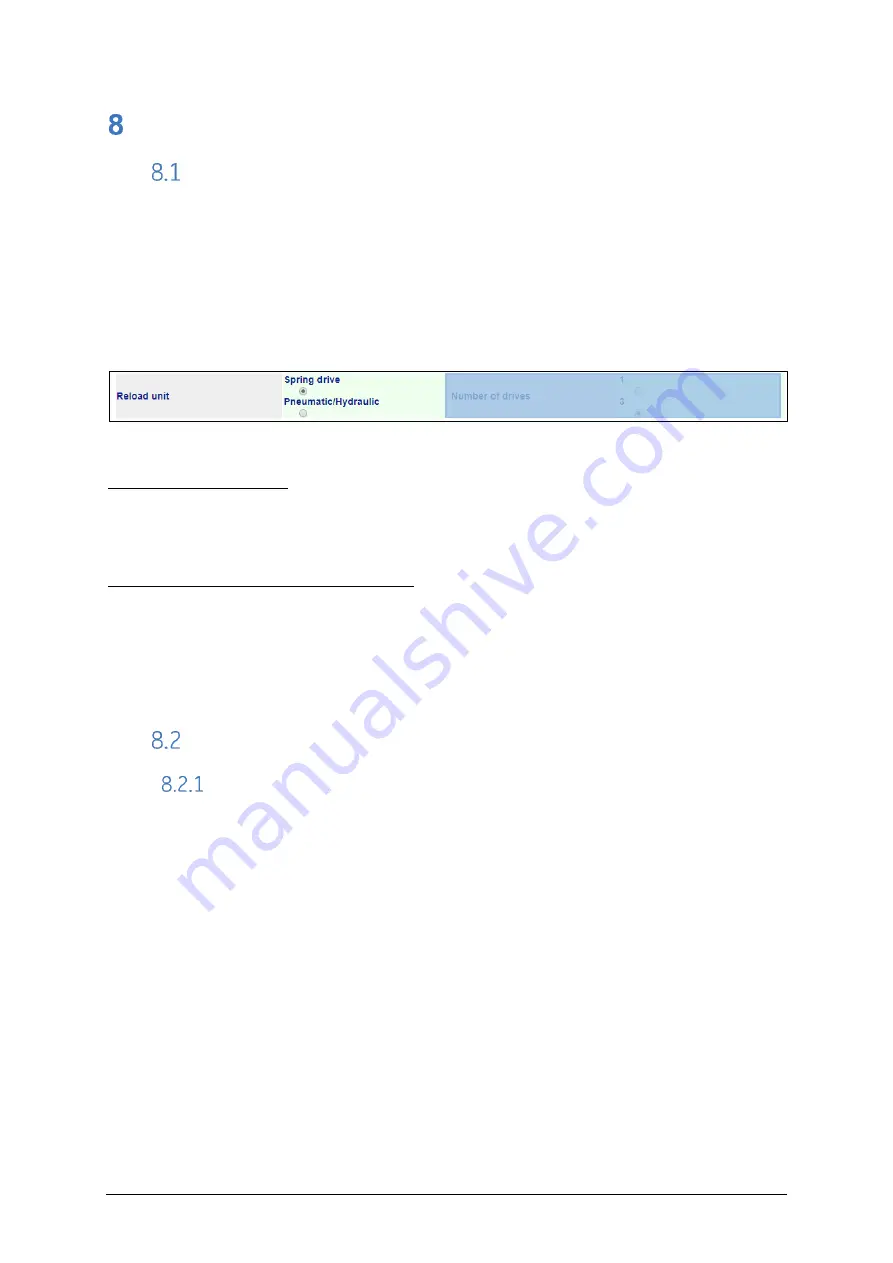
CB Watch 3 User Manual
v6.3 - May 2019
Page 65 of 100
STORED ENERGY SYSTEM MONITORING
General Description
A circuit breaker uses stored energy to open and close the contacts at speed. This stored
energy is often supplied by a spring which is rewound/rearmed by an electric motor. But
it can also take the form of pneumatic/hydraulic pressure which is built-up by an electric
compressor/pump motor. The CBW3 attempts to cover most possibilities, whether there
is one motor for all 3 poles or one motor per pole.
The type of energy storage mechanism used by the CB is entered in the settings:
HMI: Settings / Operations monitoring
Figure 103
–
Type of energy storage system
With spring mechanism, after each closing operation, a contact starts up the rewinding
motor for the opening spring. When the spring reaches its fully rewound position, then
the same contact is triggered and stops the rewinding motor. In IPO CB, there are 3
separate motors. The springs are rewound quite quickly (measured in seconds).
With a pneumatic/hydraulic mechanism, enough pressure is stored in a tank to enable
several operations. The pump motor starts whenever the pressure in the storage tank
falls below a certain level. When the required pressure is built up again, then a contact is
triggered and stops the pump motor. A single pump and some valves are used to
generate the pressure in 3 separate tanks in an IPO CB. The pump motor is usually quite
large and takes much longer to restore pressure (measured in minutes).
Spring Mechanism
Spring rewind time
The spring rewinding motors are usually DC powered. With the motor on/off contacts
connected to the system, we can acquire the time at which these contacts are activated
and therefore measure the duration of the spring rewinding phase (which is the
operating time of the rewinding motor). This is done for the single motor (in a ganged CB)
or for the motors at each of the poles (in an IPO CB). The information is displayed in the
HMI as part of the closing operation data:
The cumulated motor run time is also stored so that maintenance of the motor(s) can be
performed when the prescribed number of run time hours has been reached.
The number of times the motor starts is also recorded, but it is the same as the number
of closing operations so is not very significant with a spring drive.










































